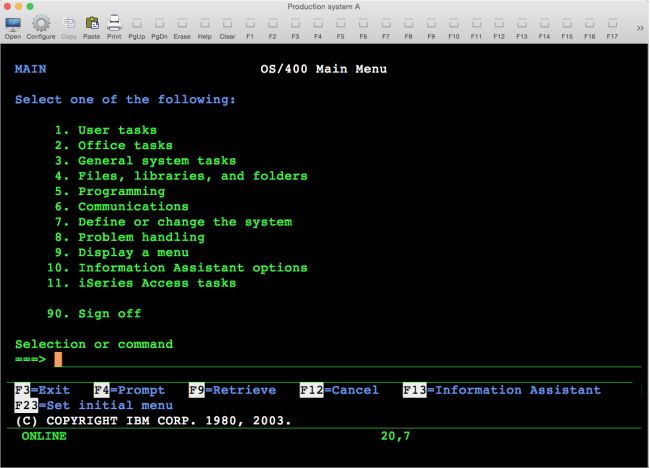
On Friday, March 16th, 2007 at 2:04 pm and is filed under Printing, Windows. Instructions for this are on Microsoft’s website.
#TN5250 DEVICE NAME WINDOWS#
Most Windows network printers will accept this configuration.įor printers that will not, you may be able to capture the printer to an LPT port. You may need to contact your system administrator to get those names. Replace “printer” with the share name for the desired printer.

Replace “server” with the name of the Windows print server. Configure TinyTERM to print “Direct to device” or select DEVICE from the drop-down list. Java -jar tn5250j.jar spainAS400 -f spainAS400.If you need to print to a Windows network printer from TinyTERM, but for whatever reason can’t select the printer, you can print directly to the device instead.
#TN5250 DEVICE NAME CODE#
This will connect to spainAS400 use the property file as described above and use the code page 284 for spanish and will notify the as400 that it can send enhanced commands. Java -jar tn5250j.jar parisAS400 -f parisAS400.prop -cp 297

This will connect to parisAS400 use the property file as described above and use the code page 297 for french. Java -jar tn5250j.jar hostAS400 -f hostAS400.prop It uses the code page 37 which is default. If there are any properties saved from a previous session then those will be read and used. It does not have to exist as it will be created. Any properties that are changed will be saved to this file under the current directory. This will connect to hostAS400 and use the file hostAS400.prop as the property file. This will change the default language of the system to use the languange translations of what is specified. Use the MDI interface represented by JInternalFrames instead of tabs. The device name is 10 characters in length and follows rfc2877. This option takes a device name parameter to be used by the Host. Default is embed so add a new session tab in the visible frame. A new frame will be created within another instance of JVMĭo not add a new session tab but open in new frame. No check for other tn5250j instances that are running. If no other instances are running and the -nc options is not specified then start up the bootstrap monitoring thread Start up emulator using the height specified Start up emulator using the width specified

This does not use the sessions file but the entries that are defined inside for PRE-EXISTIING session definitions. Start up emulator using an existing configured session you can specify multiple of these as in -s xxxx -s yyyy and at startup the emulator will start up session xxxx and yyyy. The default is the locale of the system if it is supported. Specify the locale/language to be used for literals. This gives graphical windows, edit masked fields, continued edit fields, etc. Use system name instead of system id Host IP Address/DNS Host name.Ĭode Page.

This is defined on the Session Configuration screen under Options Tab - Configuration File Name. Default is port 23 if not specifiedĬonfiguration file. If you prefer to just run a command not use the Connections screen, the following command line options are available: Option You can connect directly to a server using the following command: Select the configure button to define sessions when the session selection window is displayed. You will be presented with a Connections screen for defining sessions. These are to inform you that defaults files are being setup for you for first run. On first invocation of the emulator there where be some warning messages that will be output to the console.


 0 kommentar(er)
0 kommentar(er)
